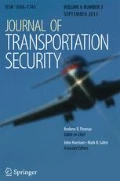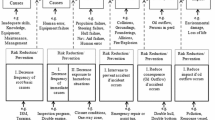Abstract
Maritime transportation accounts for over seventy percent (70 %) of global transport, thus exceeding by far the carriage of goods by air and land. In the wake of the 9/11 attacks in the United States, the International Maritime Organization under the umbrella of the United Nations, established the International Ship and Port Facility Security Code (ISPS Code); this is a mandatory set of security measures that aim to enhance the security of ships and port facilities. The enforcement of ISPS is one of the most promising and effective measures for alleviating security threats, both in terms of terrorist attacks, and sea piracy. The implementation of these measures requires large sums of investment in purchase, maintenance, and amortization of capital equipment both at ports and onboard ships; this includes X-Ray scanning, Gamma Ray, neutron scanning, biometrics; employing armed guards with ballistic vests; using computer software to identify security vulnerabilities (i.e. MSRAM Analysis Model (Burns 2013)); sharing sensitive information at a global diplomatic level, carrying out extensive training and security drills, etc. While these measures are effective and resulted in a decrease of 35 % of security threats from 2012 to 2013, at the same time the industry is concerned about the commercial and financial consequences entailed, such as delays in transportation, route deviations, and high implementation costs. Aim of this work is to evaluate this opinion dichotomy, i.e. proactive security vs. commercial and financial efficiency. To achieve this, the extended “Simon Kuznet’s Theorem” will test the Supply Chain Value and Security Risk. Econometric models will assess the security threat and the asset value pertaining to the supply chain security. The findings of this original study will assist transportation professionals in assessing the benefits of proactive security measures, and also help them verify the security-associated risks and consequences, while forecasting possible threats.


Similar content being viewed by others
References
A. Primary data: Interviews, December 2011–April 2013
Burns, Leonard. Managing Principal Engineer, American Bureau of Shipping
Caballieros, Nick. Admiral, Director of the Greek Shipowners Association of Passenger Ships
Kanellopoulos,C., Operations Director of Nereus Shipping
Malatzis, Stratos, Director of Master Mariners education, Greek Ministry of Mercantile Marine (KESEN)
Papastathis E., Principal Surveyor, American Bureau of Shipping
Roque, Francisco, Regional Manager, American Bureau of Shipping
Rowlinson, Mervyn, Dr., Principal Lecturer in Trade & Transport at London Metropolitan University
Serrano, Maria Joao, Dr. Manager of the Portuguese Port Authorities
Shinas, Sotitis, Captain. Director, Euronav Shipping, Monaco and Piraeus
B. Secondary data
Burns M (2008) ISPS – Maritime security. Conference, American Bureau of Shipping, Marriott Hotel, Istanbul Turkey
Burns M (2011) Port & terminal operations management. Course, TSU
Burns M (2012) Assessing the maritime security vulnerability risk. Texas Southern University, College of Science & Technology Open House, November 2012
Burns M (2013) Effectiveness evaluation of the maritime security risk analysis model and the dynamic risk management model. Washington DC: TRB - Transportation Research Board of National Academies, Security Committee, January 14–16, 2013
Department of Homeland Security (2012) Budget-in-Brief Fiscal Year 2012 www.dhs.gov
Krugman P (2004) The costs of terrorism: What do we know? Presented at Princeton University in December, 2004
IMF (2012) World economic outlook: Growth resuming, dangers remain: a survey by the staff of the International Monetary Fund. — April 2012, Washington, DC: International Monetary Fund, 1980–2013, v.; 28 cm. — (1981–1984: Occasional paper/International Monetary Fund, 0251-6365).
OECD (2002) Organization for Economic Cooperation and Development, 2002 Report
Ship Security Technology, Digital Ship (2004) www.thedigitalship.com
The online Port and Terminal Guide of Lloyd’s Register – Fairplay (2012) www.portguide.com
UNCTAD (2007) Distr. General, Unctad/Sdte/Tlb/2007/1, United Nations Conference On Trade And Development Maritime Security: ISPS Code Implementation, Costs And Related Financing
Wolk M (2005) Economic impact of terror, Nbc News, www.msnbc.msn.com/id/8514278/ns/business-eye_on_the_economy/t/economic-impact-terror-may-be-lasting/
World Bank Ports and Logistics Overview (2012) www.worldbank.org
Zalman A (2005) Economic impact of terrorism and the September 11 Attacks Economic Impact of Defense and Homeland Security Spending http://terrorism.about.com/od/issuestrends/a/EconomicImpact.htm. Internet Sources - Last Accessed April 2013
Author information
Authors and Affiliations
Corresponding author
Rights and permissions
About this article
Cite this article
Burns, M.G. Estimating the impact of maritime security: financial tradeoffs between security and efficiency. J Transp Secur 6, 329–338 (2013). https://doi.org/10.1007/s12198-013-0119-x
Received:
Accepted:
Published:
Issue Date:
DOI: https://doi.org/10.1007/s12198-013-0119-x




